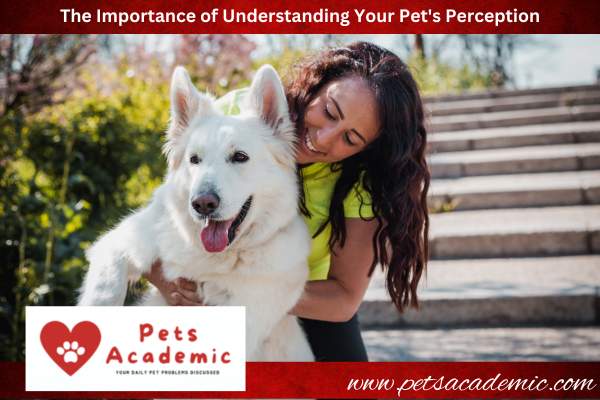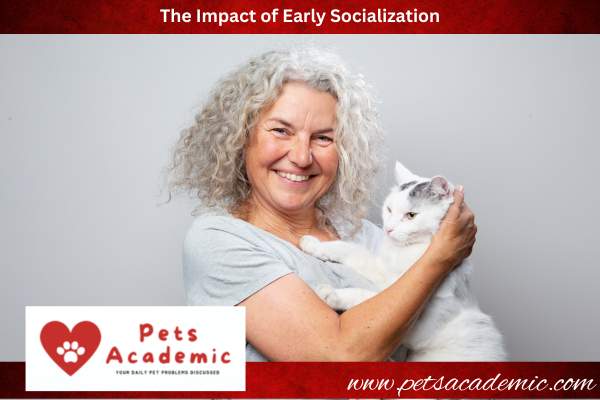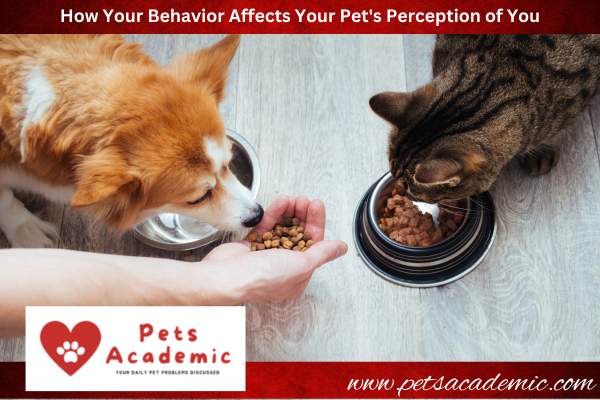Understanding your furry friend’s perception of you is essential for building a strong bond and ensuring their overall well-being.
As pet owners, it’s essential to recognize that our pets have their own unique way of perceiving the world around them, including how they perceive us.
This understanding allows us to better meet their needs, communicate effectively, and provide them with a loving and nurturing environment.
The Importance of Understanding Your Pet’s Perception

Understanding your pet’s perception is crucial for building a strong and meaningful bond with them.
Understanding how your furry friend perceives the world and you can enhance their overall well-being and ensure a harmonious relationship.
When you understand your pet’s perception, you can better meet their needs and provide them with security and comfort.
By recognizing their unique ways of communication, such as body language and vocalizations, you can respond appropriately to their emotions and desires.
Moreover, understanding your pet’s perception allows you to identify any signs of psychosocial distress they may be experiencing.
This knowledge empowers you to take proactive measures to help them overcome fear, anxiety, and trauma, promoting their mental and emotional well-being.
By investing time and effort in understanding your pet’s perception, you demonstrate your commitment to their happiness and build a strong foundation of trust and companionship.
So, take the time to learn about their world and see the world through their eyes – it will undoubtedly strengthen the bond you share with your furry friend.
Why Pet Psychology Matters

Understanding your pet’s perception is crucial for building a strong and harmonious relationship with your furry friend.
Pet psychology plays a vital role in this process by providing insights into your pet’s thoughts and feelings.
By delving into pet psychology, you gain a deeper understanding of their behavior, needs, and emotions.
Pet psychology matters because it helps you decipher your pet’s communication cues, allowing you to respond appropriately and effectively.
It enables you to identify signs of distress or discomfort, which can prevent potential behavioral issues from escalating.
Furthermore, by understanding your pet’s psychology, you can tailor training methods to their individual needs, enhancing their learning experience.
Moreover, pet psychology matters because it deepens the bond between you and your pet.
By empathizing with their perspective, you can create a nurturing and supportive environment that promotes their well-being.
Investing in pet psychology allows you to provide the best care and companionship for your beloved furry friend.
The Science of Pet Psychology
The science of pet psychology delves into the complex inner workings of our furry friends’ minds.
It involves understanding how pets perceive and interpret the world around them and how they communicate their thoughts and emotions.
One fascinating aspect of pet psychology is the role of the olfactory system in their perception.
Pets rely heavily on their sense of smell to gather information about their environment and other animals.
Another essential component of pet psychology is the study of body language.
Pets use subtle cues such as tail wagging, ear position, and facial expressions to communicate their feelings and intentions.
We can better interpret our pets’ needs and emotions by understanding these nonverbal signals.
Factors such as age, breed, and gender also play a role in shaping a pet’s perception.
Different breeds may have different temperaments and communication styles, while age and gender can influence social behaviors.
The Role of the Olfactory System in Pet Perception

The olfactory system is crucial in how pets perceive the world around them.
This heightened sense allows them to detect and interpret a vast array of scents that are imperceptible to us.
Pets use their olfactory system to gather information about their environment, other animals, and even their owners.
They can detect subtle changes in scent, giving them clues about mood, emotions, and overall well-being.
This is why dogs, in particular, are often used for tasks such as search and rescue or drug detection.
How Pets Use Body Language to Communicate

Pets use body language as a primary means of communication with their human companions.
Understanding this form of communication is crucial in building a strong bond with your furry friend.
A critical aspect of their body language is their tail.
A wagging tail usually indicates happiness and excitement, while a tucked tail may signal fear or anxiety.
Pay attention to the position and movement of their ears as well.
Erect ears often mean attentiveness, while flattened ears can indicate fear or aggression.
Another key element is their posture.
A relaxed and loose body posture indicates contentment, while a rigid or tense body posture may suggest discomfort or unease.
Additionally, facial expressions are essential in understanding pets’ emotions.
Dilated pupils may indicate fear or excitement, while narrowed eyes can signal aggression or discomfort.
By observing and interpreting your pet’s body language, you can better understand their needs, emotions, and overall perception of you.
This understanding will facilitate effective communication and strengthen your bond with your furry companion.
Factors Affecting Pet Perception
Age, breed, and gender are all factors that can influence a pet’s perception of their owner.
Age plays a role in how receptive a pet is to training and socialization, with younger animals often being more adaptable and open to forming strong bonds.
The breed can also impact perception, as certain breeds may have specific traits or instincts that affect their behavior and interactions with humans.
Additionally, gender can play a role, as some pets may have a preference for one gender over another based on past experiences or personal preferences.
Another crucial factor in pet perception is the impact of early socialization.
Proper socialization during a pet’s early development stages can greatly influence their perception of humans and their ability to form positive relationships.
Pets with positive socialization experiences are generally more trusting and comfortable around people.
Understanding these factors can help pet owners better comprehend their furry friend’s perception and tailor their interactions to foster a strong and healthy bond.
Age, Breed, and Gender
Age, breed, and gender are important factors that can influence a pet’s perception of their owner.
Each of these elements contributes to a pet’s unique personality and behavior.
Age plays a significant role in a pet’s perception, as younger animals may be more playful and energetic, while older pets may be more relaxed and less inclined to engage in certain activities.
Additionally, your pet’s breed can also impact their perception of you.
Different breeds have distinct characteristics and tendencies, affecting how they interact with their owners.
Gender is another factor that can influence a pet’s perception.
Male and female pets may have different behavioral patterns and preferences, which can shape their perception of their owner.
Understanding these factors can help pet owners tailor their interactions and provide appropriate care based on their pet’s age, breed, and gender.
By considering these aspects, pet owners can better understand their furry friends and build stronger bonds with them.
The Impact of Early Socialization

Early socialization is crucial in shaping a pet’s perception of the world and their interactions with others.
It refers to exposing pets to various stimuli, environments, and experiences during their critical developmental period.
This period usually occurs between 3 to 14 weeks of age in puppies and kittens.
Proper socialization during this critical window can significantly impact a pet’s behavior and temperament throughout their lives.
Pets who are exposed to a wide range of people, animals, sounds, and environments tend to be more confident, adaptable, and less fearful or aggressive.
By introducing your pet to different sights, sounds, and experiences at an early age, you are helping them develop positive associations and reducing the likelihood of developing behavioral issues later on.
Additionally, early socialization can contribute to a stronger bond between you and your furry friend, as they learn to trust and feel safe in their surroundings.
Remember, it’s never too late to start socializing your pet, but the earlier you begin, the better the outcomes will likely be.
So, make sure to give your pet plenty of opportunities to explore the world around them and interact with other animals and people in a positive and controlled manner.
The Human-Animal Bond
The human-animal bond is a unique and special connection that forms between humans and their pets.
It goes beyond the basic caregiver and dependent relationship and is characterized by mutual affection, trust, and understanding.
Pets have a remarkable ability to sense our emotions and provide comfort and companionship.
They become an integral part of our lives, offering unconditional love and support.
Research has shown that the human-animal bond can benefit both parties involved.
Interacting with pets has been found to reduce stress, lower blood pressure, and increase feelings of happiness and well-being.
Pets also provide a sense of purpose and responsibility, as they rely on us for their care and well-being.
Moreover, the human-animal bond is a two-way street. Our behavior and treatment towards our pets significantly impact their perception of us.
We strengthen this bond and build trust by showing them love, respect, and kindness.
Is It a One-Way Street?
The human-animal bond is often seen as a one-way street, with humans providing care, love, and attention to their pets.
However, it is essential to recognize that this bond goes both ways.
While pets may not be able to express their feelings in words, they have their own unique ways of showing affection and forming attachments to their owners.
Research has shown that pets can develop strong emotional bonds with their human companions.
They can sense when their owners are in distress and provide comfort and support.
Pets often rely on their owners for protection, food, and social interaction.
They look to their owners for guidance and reassurance, and their perception of their owners greatly influences their behavior and well-being.
To maintain a healthy and positive relationship with your pet, it is crucial to understand that the bond between you and your furry friend is a two-way street.
By providing love, attention, and care, you are not only fulfilling your pet’s physical needs but also nurturing their emotional well-being.
How Your Behavior Affects Your Pet’s Perception of You

Your behavior greatly influences your furry friend’s perception of you.
How you interact with your pet can shape their perception of you and the overall quality of your relationship.
Pets are highly perceptive creatures, and they can pick up on subtle cues from your body language, tone of voice, and overall demeanor.
If you consistently display kindness, patience, and understanding towards your pet, they will perceive you as a loving and trustworthy companion.
On the other hand, if you exhibit aggression, impatience, or neglect, your pet may develop fear, anxiety, or even aggression towards you.
Positive reinforcement and consistent training methods can also play a significant role in how your pet perceives you.
Rewarding good behavior and providing clear boundaries can help establish a strong bond of trust and respect.
Remember, your pet looks to you for guidance and relies on your behavior to feel safe and loved.
By being mindful of your actions and treating your furry friend with kindness and respect, you can ensure a positive and healthy perception of you in their eyes.
Conclusion
Understanding your pet’s perception is essential for building a strong bond and maintaining their well-being.
By delving into the world of pet psychology, you can gain insights into how your furry friend perceives you and the world around them.
The science of pet psychology reveals that pets rely heavily on their olfactory system and body language to communicate with their human counterparts.
Factors such as age, breed, and gender, as well as early socialization experiences, can influence a pet’s perception and behavior.
It’s important to recognize that the human-animal bond is a two-way street.
Your behavior and actions significantly impact your pet’s perception of you.
Understanding how your pet interprets your cues and signals can strengthen your relationship and create a positive environment for them.
Identifying signs of psychosocial distress in your pet is crucial. Anxiety and stress can affect their perception and overall well-being. By providing support and implementing strategies to help them overcome fear and trauma, you can improve their quality of life.
In conclusion, understanding your pet’s perception enhances your bond and promotes their emotional and psychological health.
By gaining insights into their world, you can provide the love, care, and understanding they need to thrive.
More Articles: How pets remember and recognize their owners.

